In Berani, Governor General’s Award finalist Michelle Kadarusman spins together three perspectives: Malia, who is prepared to risk anything for her activism, Ari, who knows the right path but fears what it will cost, and Ginger Juice, the caged orangutan who still remembers the forest and her mother. The choices the young people make will have consequences for themselves, for Ginger Juice, and for others, if they are brave enough or reckless enough to choose.
Indonesia
Well, That Was Unexpected
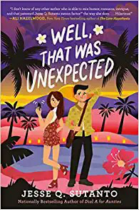
Sharlot Citra is whisked from Los Angeles to her mother’s native Indonesia, where she finds herself fake dating the son of one of the wealthiest families in Indonesia, and she is surprised when she actually starts to fall in love with the boy, the country, and the big family she never knew before.
Girl of the Southern Sea
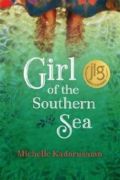
From the time she was a little girl, Nia has dreamed up adventures about the Javanese mythical princess, Dewi Kadita. Now fourteen, Nia would love nothing more than to continue her education and become a writer. But high school costs too much. Her father sells banana fritters at the train station, but too much of his earnings go toward his drinking habit. Too often Nia is left alone to take over the food cart as well as care for her brother and their home in the Jakarta slums.
After The Ashes
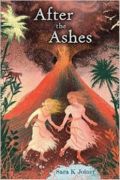
In 1883 thirteen-year-old Katrien Courtlandt is more interested in science and exploring the Javanese jungle for beetles with her native friend, than in becoming a young lady like her despised cousin Brigitta–but when Krakatoa erupts, the tsunami hits, and their families are swept away the two cousins must struggle to survive together.
The Tiny Boy And Other Tales From Indonesia
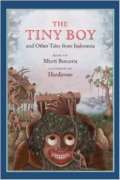
Eight tales about heroes and sacrifice, love and family — all rooted in a land that is both challenging and abundant. Some of the stories strike a familiar chord. There is the tiny child, no bigger than a thumb, who outwits a giant; the poor farmer who cannot feed his children and leaves them abandoned in the forest; the princess who breaks an enchantment and releases a prince. Yet the tales are filled with the unexpected, too, as humans, monsters and the natural world transform and intersect.
A princess who is pursued by two kings from neighboring kingdoms sacrifices herself to keep peace in the land, and is transformed into a sea creature that will provide nourishment for all her people. A crying baby, ignored by his mother, turns into a bird, teaching villagers a valuable lesson. A jealous concubine poisons the king’s son so her own child can inherit the kingdom, only to find her son going off to search for his half-brother, never to return. A man traps the sun to stop it from setting, so that his family and fellow villagers will have enough time to gather food.
The stories are exceptionally relevant today, as they draw our attention to the value of the odd and the small, the preciousness of children and our natural resources, the need to not take our food for granted.
Gathered from oral sources and old collections written in Dutch and indigenous languages, these folktales are simply and evocatively told, accompanied by startling and vibrant images by Indonesian artist Hardiyono.
Burung Camar dan Kokokan/Seagull and Heron
Picks up where the first book left off with Seagull continuing inland from the beach and befriending Heron and Kingfisher along the way. The trio discover a whole new set of environmental problems faced by the children and animals in the cities and surrounding countryside. Readers are also introduced to the local “Pemulung” or scrap collectors in an attempt to explain their very simple and essential role in the process of scrap collecting and recycling on the island’. Source: publisher’s website
Sea
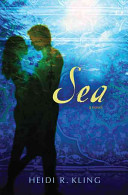
Despite recurring nightmares about her mother’s death and her own fear of flying, fifteen-year-old Sienna accepts her father’s birthday gift to fly to Indonesia with his team of disaster relief workers to help victims of a recent tsunami, never suspecting she would fall in love with an Indonesian boy, recently orphaned, who suspects his father is still alive.
Cycle of Rice, Cycle of Life: A Story of Sustainable Farming
 On the island of Bali in Southeast Asia, rice farming is a way of life. The people live in tune with the natural rhythms and cycles of the water and the soil. Ingrained in their community and culture, rice farming connects them to the land and one another. Balinese farmers have planted rice using an intricate system of water sharing and crop rotation for more than a thousand years. Intertwined with their spiritual, social, and day-to-day lives, this system has made Bali a leading producer of one of the world’s most important crops. And because Balinese rice farming respects the balances of nature, it serves as a remarkable example of sustainable agriculture in an increasingly industrialized world. With lush photographs and captivating text, Jan Reynolds explores the traditional world of rice farming on the beautiful island of Bali. Readers of all ages will come away with an enhanced awareness of how we farm, eat, and live today, and the effects these practices have on the world of tomorrow.
On the island of Bali in Southeast Asia, rice farming is a way of life. The people live in tune with the natural rhythms and cycles of the water and the soil. Ingrained in their community and culture, rice farming connects them to the land and one another. Balinese farmers have planted rice using an intricate system of water sharing and crop rotation for more than a thousand years. Intertwined with their spiritual, social, and day-to-day lives, this system has made Bali a leading producer of one of the world’s most important crops. And because Balinese rice farming respects the balances of nature, it serves as a remarkable example of sustainable agriculture in an increasingly industrialized world. With lush photographs and captivating text, Jan Reynolds explores the traditional world of rice farming on the beautiful island of Bali. Readers of all ages will come away with an enhanced awareness of how we farm, eat, and live today, and the effects these practices have on the world of tomorrow.
